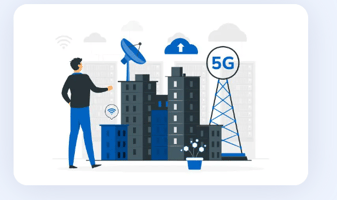In a world where technology plays an increasingly vital role in various aspects of our lives, the...
Catalyzing Scientific Breakthroughs: The Power of LIMS Software Development
Laboratories have always been the crucibles of innovation, where researchers, scientists, and professionals converge to push the boundaries of knowledge and quality. To keep pace with the dynamic demands of these environments, Laboratory Information Management Systems (LIMS) software has evolved into an indispensable ally. LIMS software development has progressed significantly, revolutionizing laboratory operations and unleashing the potential for scientific breakthroughs.
The Cornerstone of LIMS
LIMS software is the digital cornerstone that underpins modern laboratories. It encompasses a comprehensive suite of functionalities, including sample tracking, data management, inventory control, and adherence to industry-specific regulations. From humble origins as basic record-keeping systems, LIMS software has transformed into highly customizable, industry-tailored solutions.
Key Features and Advancements
1. Integration with Analytical Instruments
One of the most revolutionary advancements in LIMS software development is its integration with a wide array of analytical instruments. This integration automates data collection, reducing the risk of human error and enabling real-time data transmission. Laboratories benefit from improved efficiency and quicker results.
2. The Ascendancy of Cloud-Based Solutions
The advent of cloud technology has reshaped the LIMS landscape. Cloud-based LIMS systems offer enhanced accessibility and scalability, reducing the need for extensive on-site infrastructure. Researchers and scientists can access data from virtually anywhere, making remote work and collaboration seamless.
3. Empowering Data Analytics
Modern LIMS software goes beyond being a mere data repository; it is now a potent analytical tool. Advanced analytics capabilities have been seamlessly integrated, allowing laboratories to extract valuable insights from their data. This empowers researchers to make data-driven decisions, optimize processes, and accelerate their scientific endeavors.
4. Regulatory Compliance Features
In regulated sectors such as healthcare and pharmaceuticals, compliance with stringent standards is non-negotiable. LIMS software now offers robust features tailored to facilitate adherence to industry-specific regulations. This simplifies audits and inspections and reduces compliance-related stress.
5. Mobility and Flexibility
In an era defined by mobility, LIMS software developers have extended their offerings to include mobile applications. These apps empower laboratory staff to perform tasks and access data using smartphones and tablets, enhancing flexibility and productivity both within the laboratory and on the go.
Persistent Challenges and Future Horizons
While LIMS software has advanced significantly, challenges persist. Data security, especially in cloud-based systems, remains a top concern. Laboratories must remain vigilant in safeguarding sensitive information. Moreover, ensuring compatibility with a wide array of laboratory instruments can be complex.
Looking forward, the journey of LIMS software development continues. Artificial intelligence and machine learning are making their mark in data analysis and process optimization within laboratories. The Internet of Things (IoT) is poised to revolutionize data collection and automation in the laboratory environment, potentially opening new avenues for experimentation and discovery.
Conclusion
LIMS software has come a long way from its inception, evolving into a pivotal tool that enhances the efficiency, precision, and compliance of laboratories across various industries. In a world that is increasingly embracing digital transformation, LIMS software serves as the catalyst, ensuring the pursuit of scientific knowledge and the delivery of high-quality products and services remain consistently upheld.
In the ever-advancing landscape of science, LIMS software stands as a pivotal force, enabling laboratories to catalyze their operations, break new ground, and contribute to our collective understanding of the world.


